Nano Banana
What is Nano Banana?
Nano Banana is Google’s new generative artificial intelligence model for creating high-fidelity images from text. This tool, integrated directly into Android and Chrome systems, allows users to generate illustrations, graphics, or visual compositions from written descriptions, with a simplified, accessible, and fast-response approach.
Unlike more advanced models such as Imagen 3 or Gemini 2.5, Nano Banana is not designed to compete in hyperrealistic quality, but to provide a lightweight, functional, and agile solution, intended for devices with limited resources. For this reason, Google has integrated it into mobile devices and browsers, targeting everyday use cases such as illustrations for posts, custom stickers, images for presentations, or small graphic elements for apps and social media.
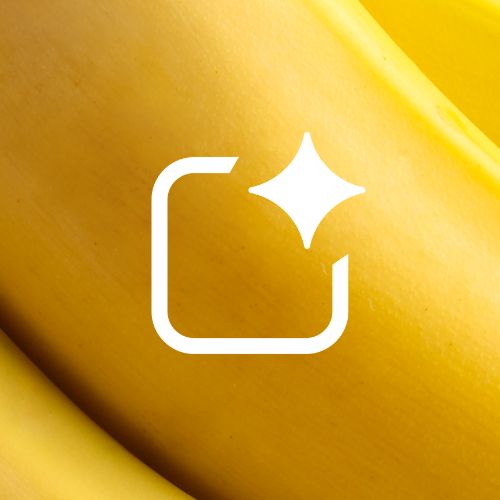
The goal of Nano Banana is to democratize access to visual creation with AI. No technical knowledge or professional design tools are required: you simply write what you need and let the AI turn it into an image. This approach facilitates spontaneous creativity, making it ideal for content creators, marketing teams, educators, students, or anyone who needs to generate images easily without relying on external platforms.
Additionally, as part of the Google ecosystem, Nano Banana runs privately and locally on the device, ensuring faster performance, reduced data usage, and a more secure experience, since it is not necessary to send information to remote servers.
Why has Google named its new image model “Nano Banana”?
One of the most discussed aspects of Google’s new image generation model is, without a doubt, its curious name: Nano Banana. Although the tech giant has not made the exact reason behind this name public, there are enough clues to understand how this nickname became popular.
The term “Nano Banana” initially appeared as a codename leaked in the LMArena performance benchmark, where it stood out as one of the most efficient and powerful models for AI image generation tasks. At that time, it was not known which company it belonged to, but soon the community began linking it to Google due to its performance and technical characteristics.
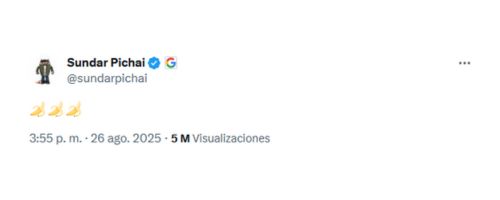
The unofficial confirmation came when Sundar Pichai, CEO of Google, posted a mysterious message on X (Twitter) with three banana emojis 🍌🍌🍌, sparking a wave of interpretations. Days later, media outlets such as Trusted Reviews, Marketing News, and Ariapsa connected the dots: the model previously known as “Nano Banana” was actually the new Gemini 2.5 Flash Image.
This type of internal naming is not new within Google, which has historically used playful or coded names for experimental projects. “Nano Banana” appears to have been one of those development names that, after going viral, was adopted by the tech community as an informal identifier for the model.
In summary:
- There is no official explanation for the origin of the name.
- It is probably an internal codename, as Google has done on other occasions.
- The name became popular following Sundar Pichai’s tweet and the leaked benchmark results.
- Today, “Nano Banana” has become an unofficial brand recognized by the community, even though commercially the model has been integrated into the Gemini family.
Beyond the Banana: A New Visual Paradigm with AI
The emergence of models like Nano Banana not only reflects the technical evolution of image generation through artificial intelligence, but also a shift in how we engage with creativity, immediacy, and visual production processes. Thanks to its speed, quality, and low computational cost, this Google model opens the door for more people, creative teams, and companies to create powerful visual content without significant technological barriers.
By democratizing access to high-performance tools, experimentation in marketing, graphic design, audiovisual content, education, or social media is being facilitated, yielding more effective results that are adapted to the new demands of the digital environment.
AI-generated imagery is no longer a promise of the future: it is the present. And with models like Nano Banana, the future becomes much more accessible, fun… and, why not say it, a little more yellow.
Comparison: Sora vs Nano Banana
Artificial intelligence applied to the generation of visual content is advancing at a dizzying pace, and major tech companies are competing to lead this field with increasingly sophisticated offerings. Two of the names that have attracted the most attention in recent months are Sora, developed by OpenAI, and Nano Banana, Google’s latest initiative within the Gemini 2.5 Flash Image suite.
Although both models pursue different objectives in their design—Sora primarily focused on audiovisual generation and Nano Banana centered on image creation and editing—it is interesting to compare them to understand the value they can offer to businesses, designers, and digital marketing professionals.
This comparison aims to provide a clear view of the capabilities of each tool in the field of AI-generated images, evaluating factors such as result quality, visual consistency, generation speed, and ease of integration into real-world projects.
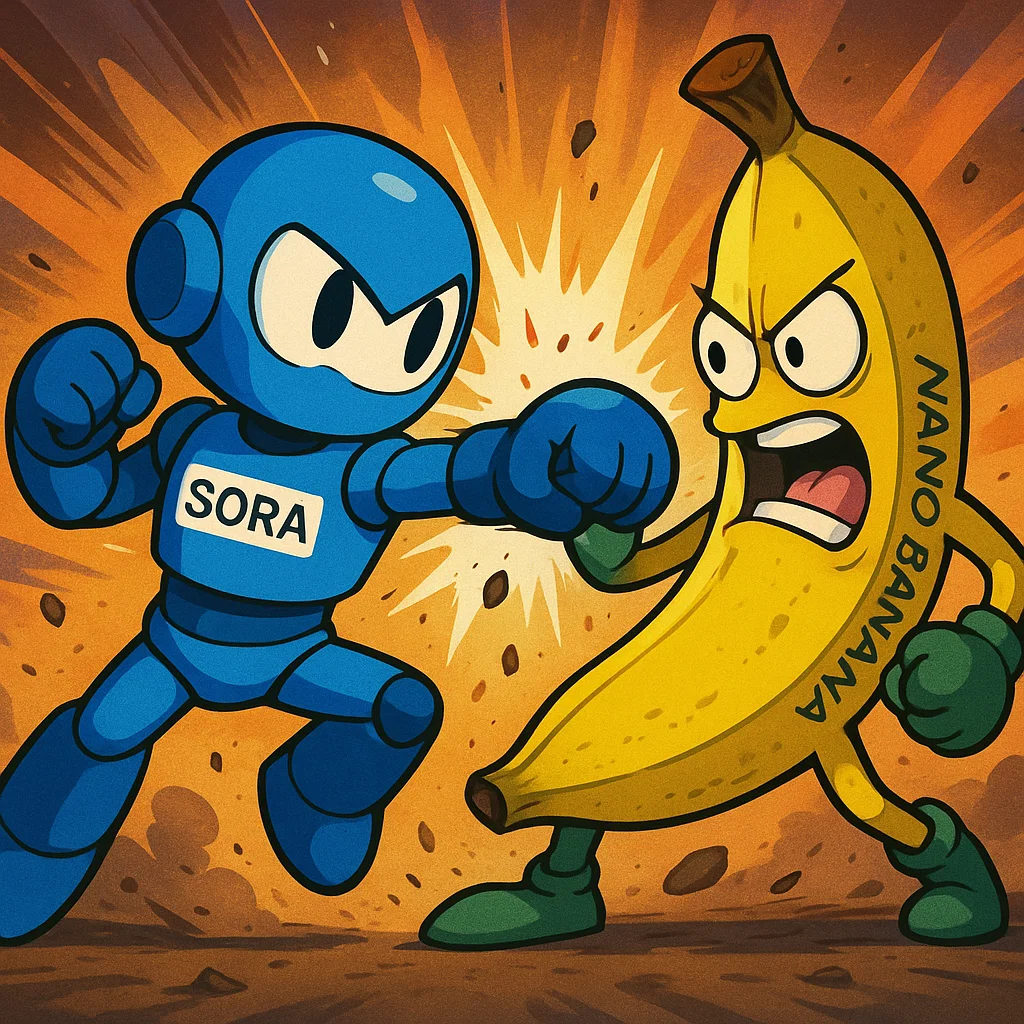
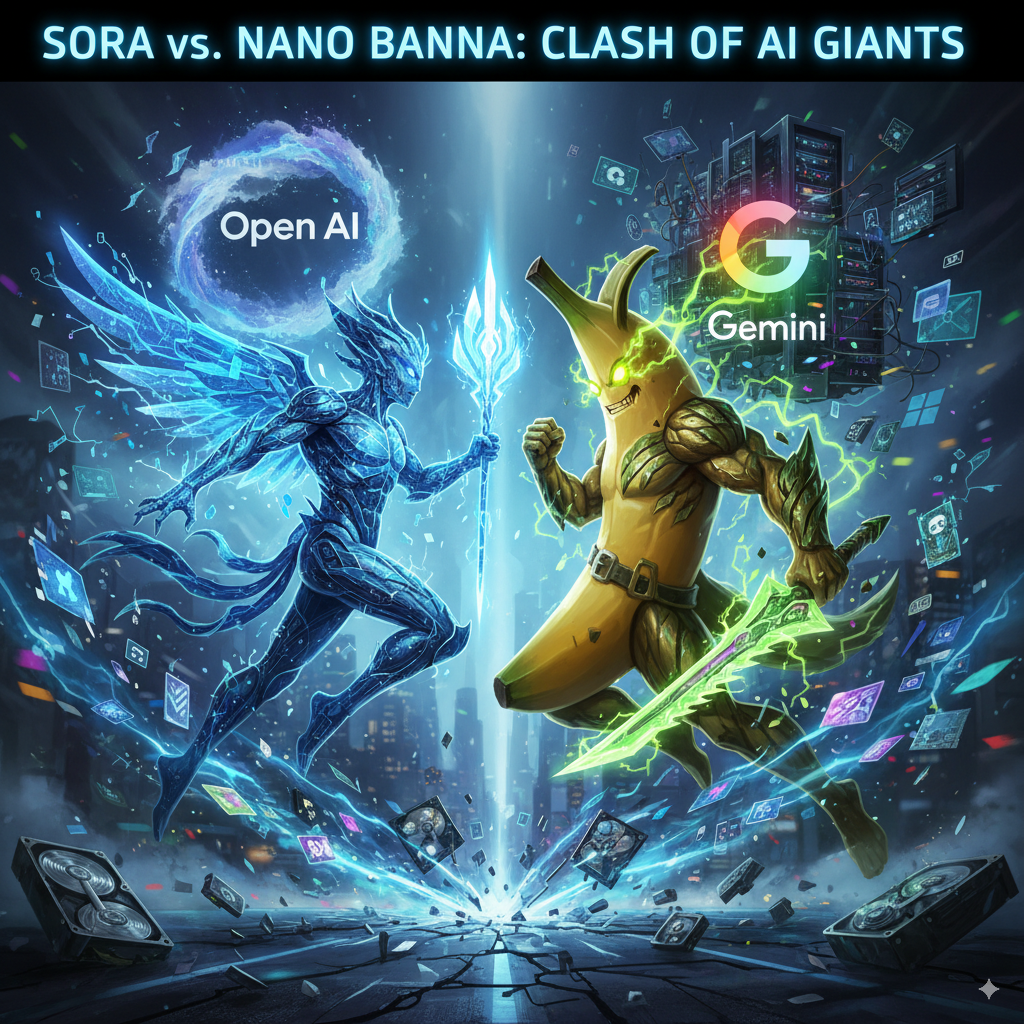
The images you see were generated with the prompt: “Total creativity, create an image of a fight between SORA (OPEN AI) and NANO BANANA (Google Gemini 2.5 Flash Image).” The image on the right was generated by SORA, and the image on the left by Google Gemini 2.5 Flash Image (Nano Banana). From here, we will use the plain text image version options, using the same texts that accompany this blog for each of its features (we are going to try to challenge the AI).
Main Focus
SORA
Although its core is video generation, it also produces frames and highly detailed still images as part of the process. These images can be extracted and used independently, offering cinematic realism.
NANO BANANA
It is specifically designed to create and edit images. Its focus is not on video, but on visual consistency, generation speed, and conversational editing.
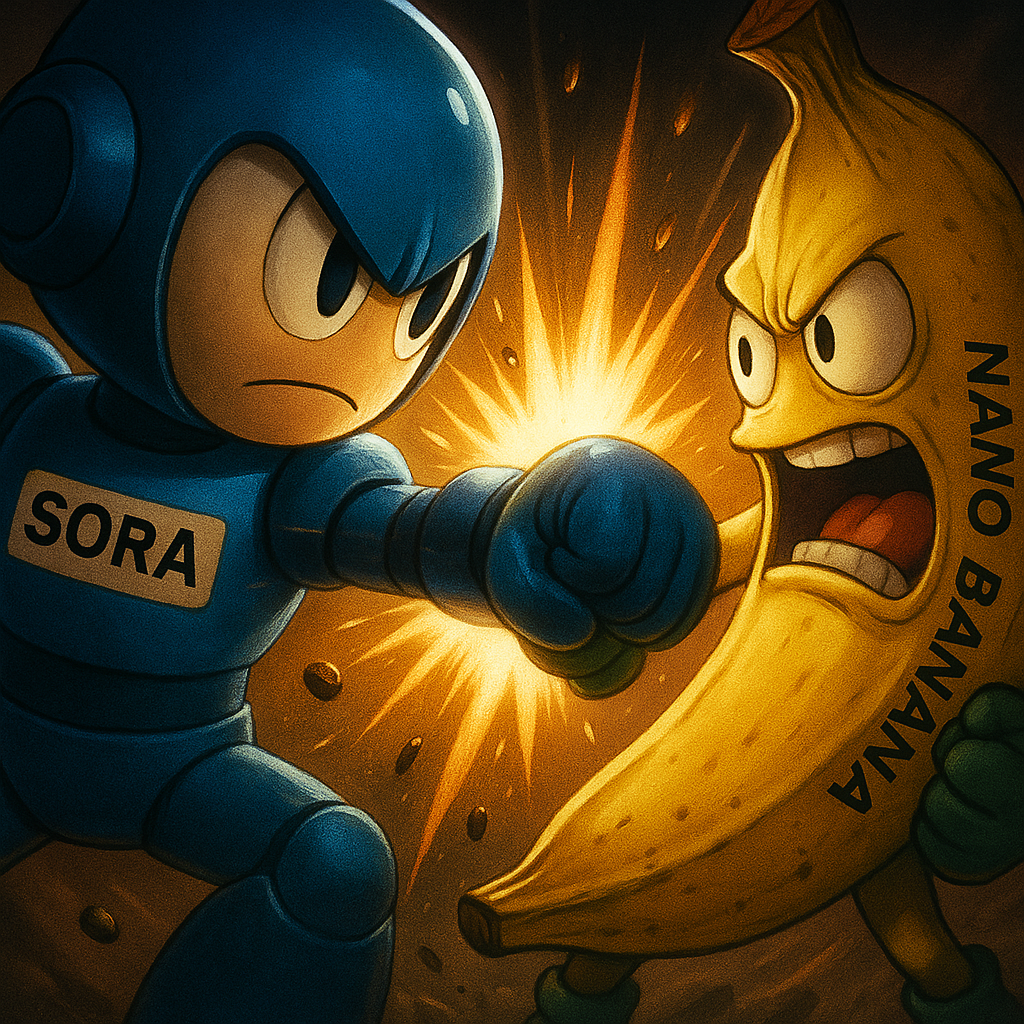
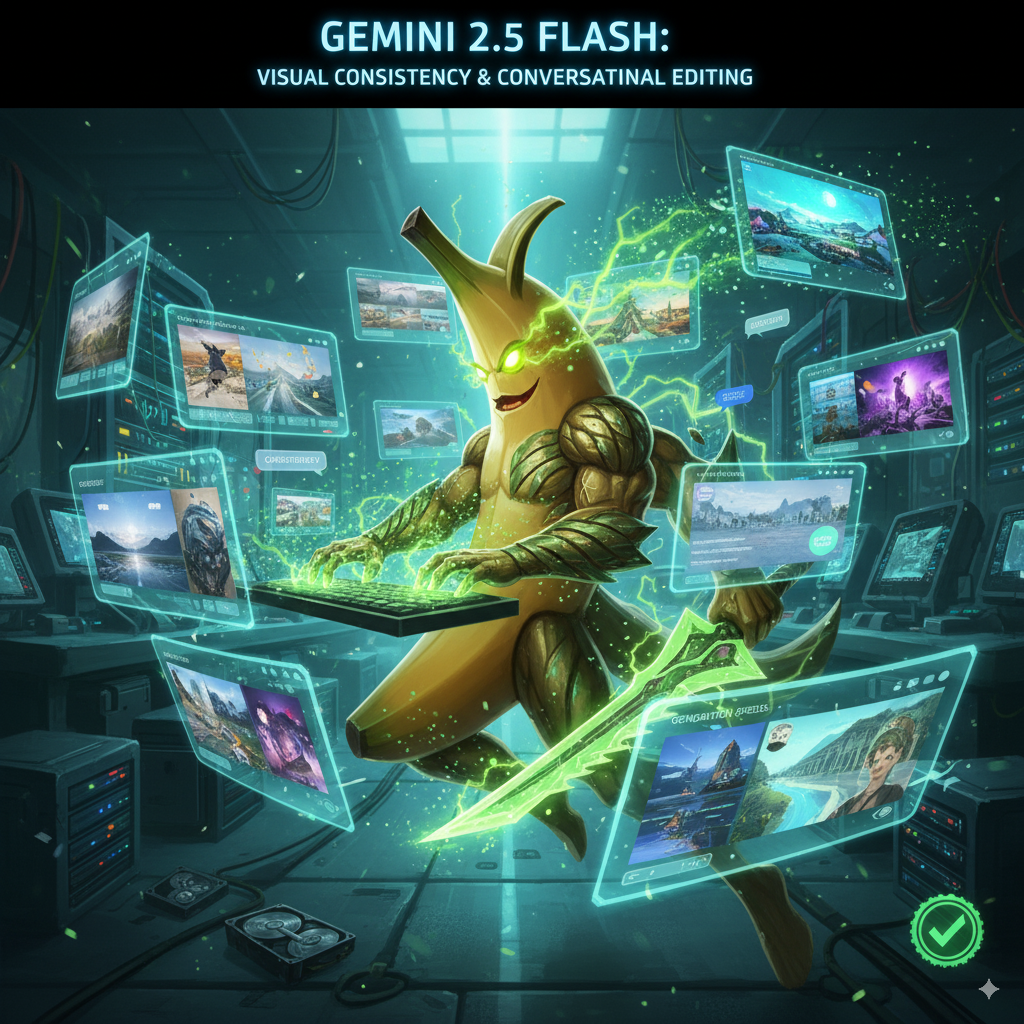
To see how they respond to plain text, we will input each description into the text box and observe how they react freely.
To SORA: Although its core… and we add an instruction (create an image related to the previous one based on these descriptions I will give you about yourself)
To Nano Banana: It is specifically designed… and we add an instruction (create an image related to the previous one based on these descriptions I will give you about yourself)
Quality and Visual Consistency
SORA
Being designed for visual narratives, it produces images that are very rich in detail, with varied artistic styles and complex scenes. However, as a motion-focused model, consistency between still images is not always its priority.
NANO BANANA
Its strength lies in the consistency of characters and objects across different images. This makes it more reliable when generating a series of images with the same style or elements.
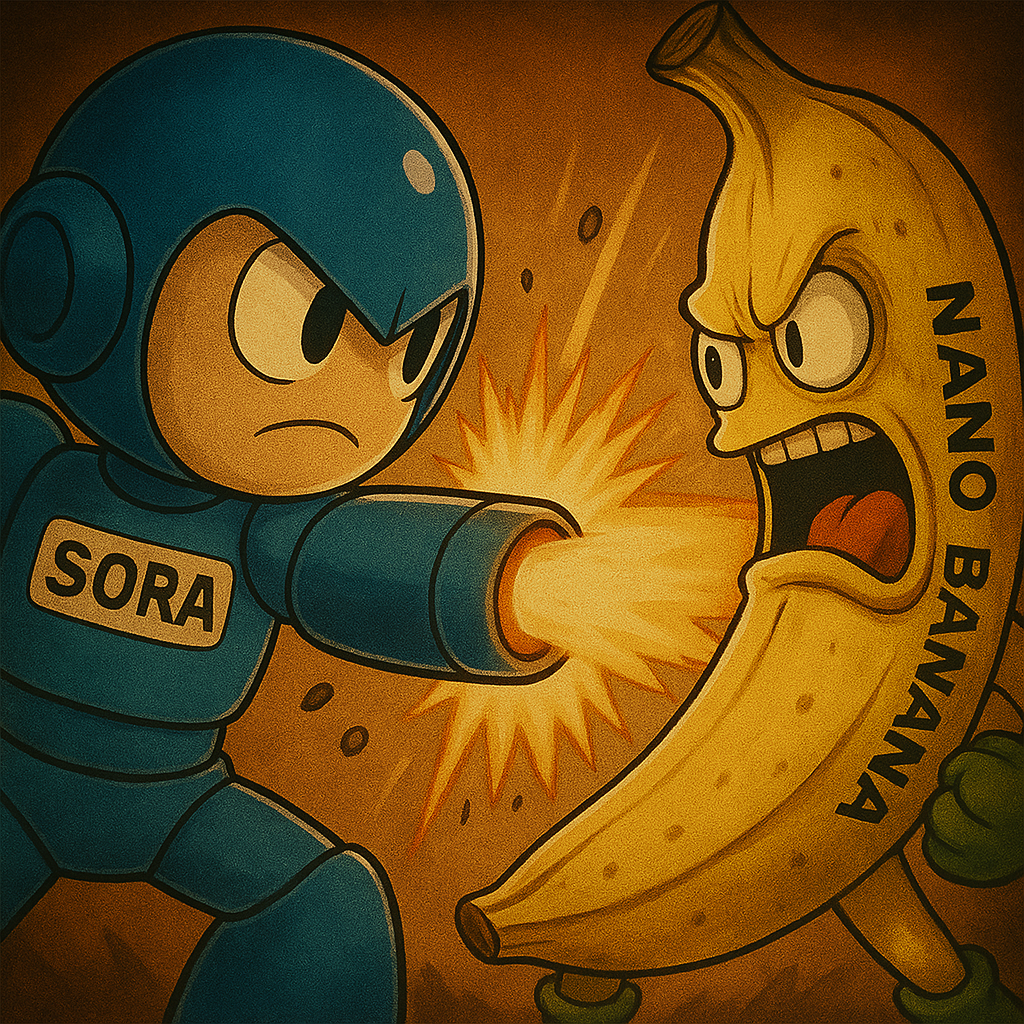
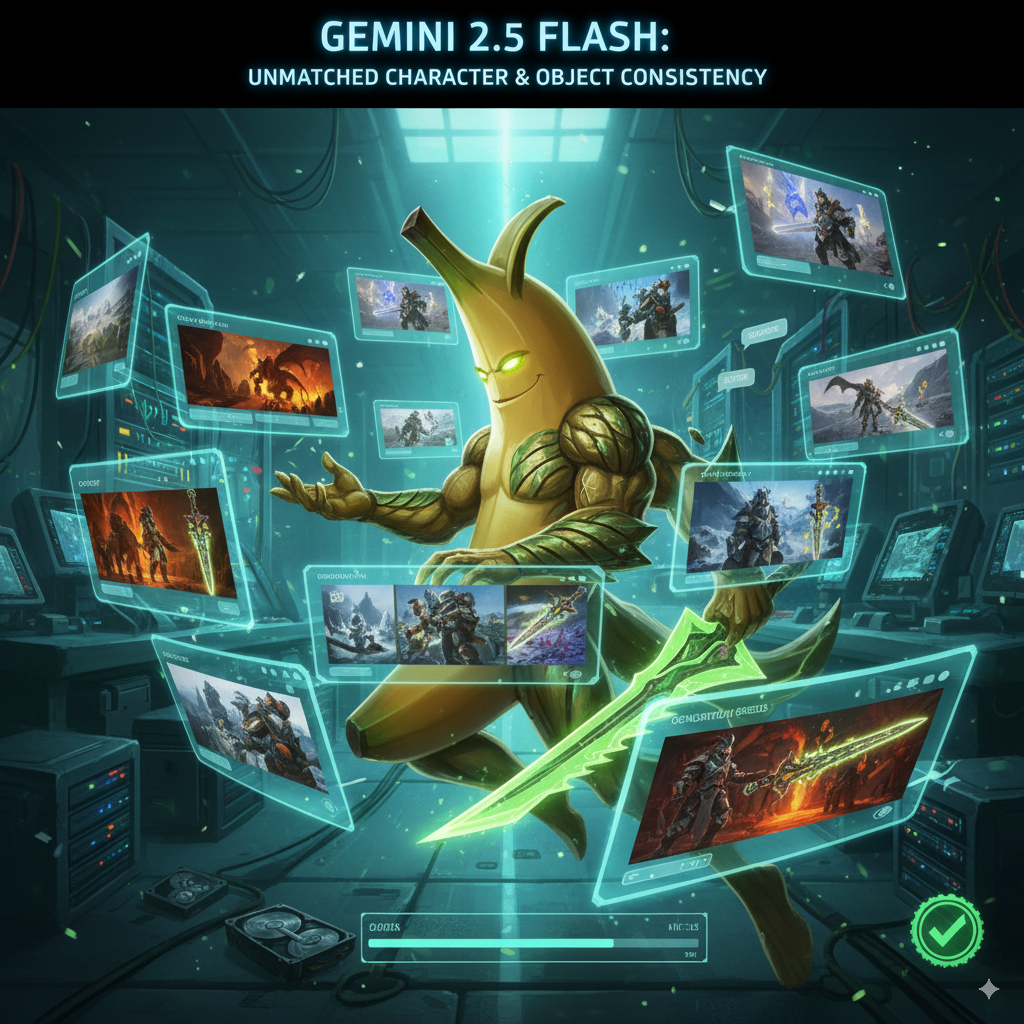
We can see that the two AIs interpret very different things in their plain text prompts.
Speed and Accessibility
SORA
Image generation is a byproduct of the video process, so it is usually slower and dependent on OpenAI’s infrastructure. Additionally, access remains limited to certain plans (Plus/Pro).
NANO BANANA
It responds within seconds (1–10s), available in the Gemini app and AI Studio. Its accessibility is higher and it is designed for users who need quick and practical results.
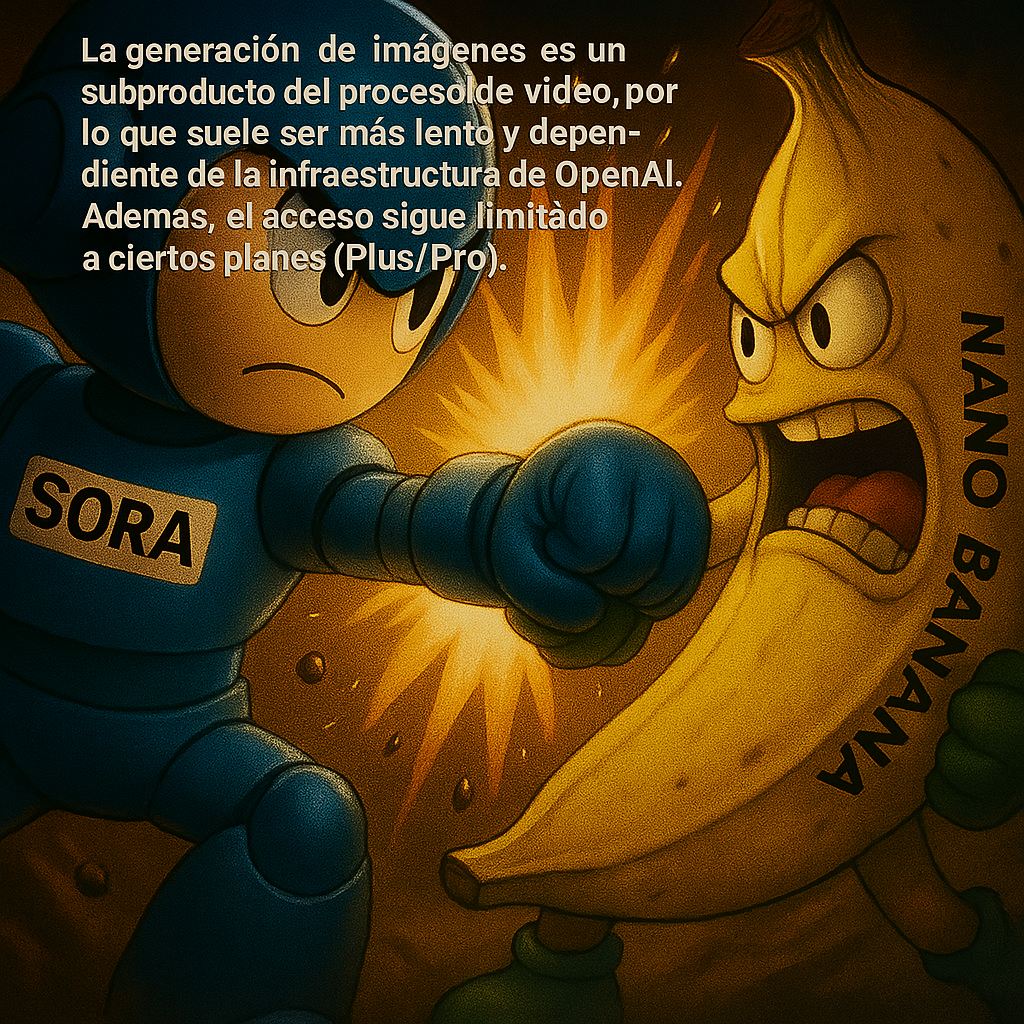
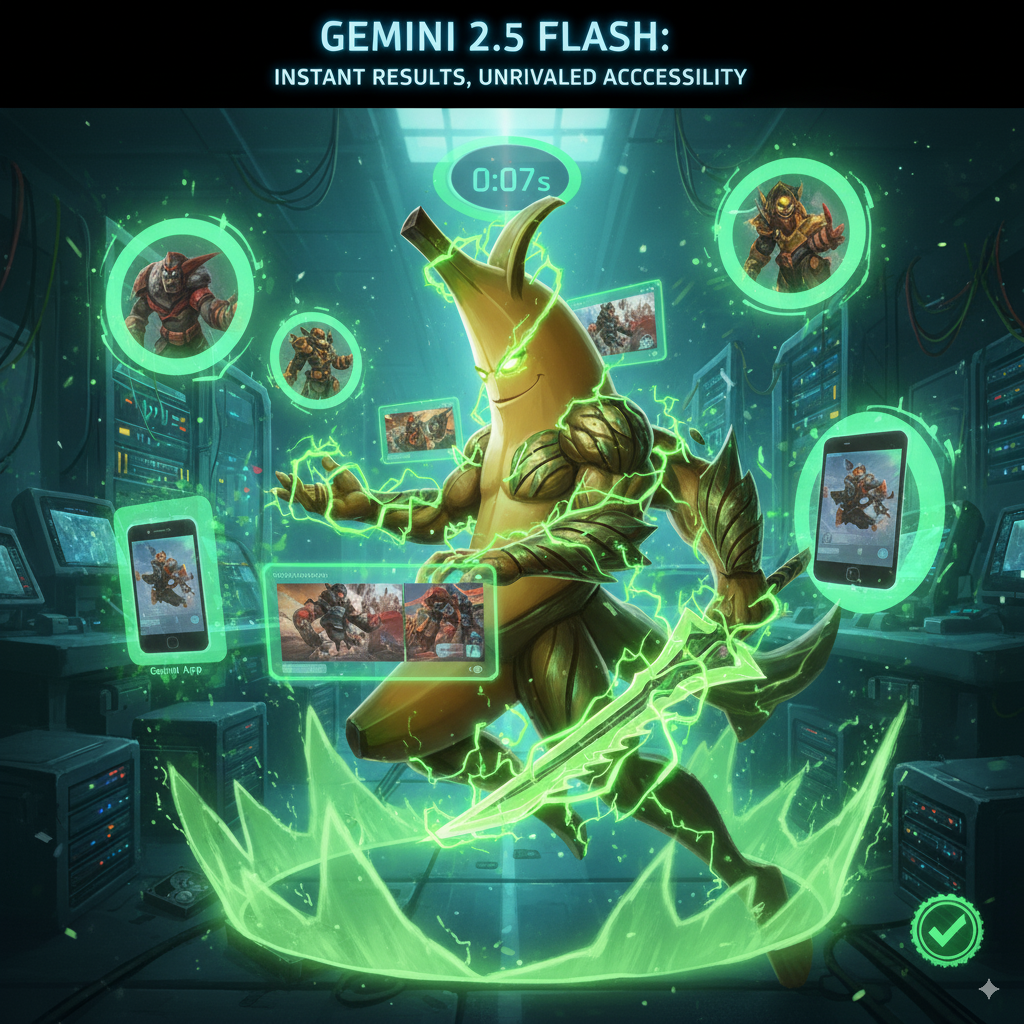
Gradually, both start to collapse and begin producing very wild outputs. We will give them slightly more “human” instructions, not just the plain text descriptions.
Editing and Personalization
SORA
It offers some control in the prompts to vary aesthetics, but it is not optimized for editing individual images.
NANO BANANA
It allows editing of existing images, changing backgrounds, styles, or details through conversational instructions, functioning almost like an intelligent graphic editor.
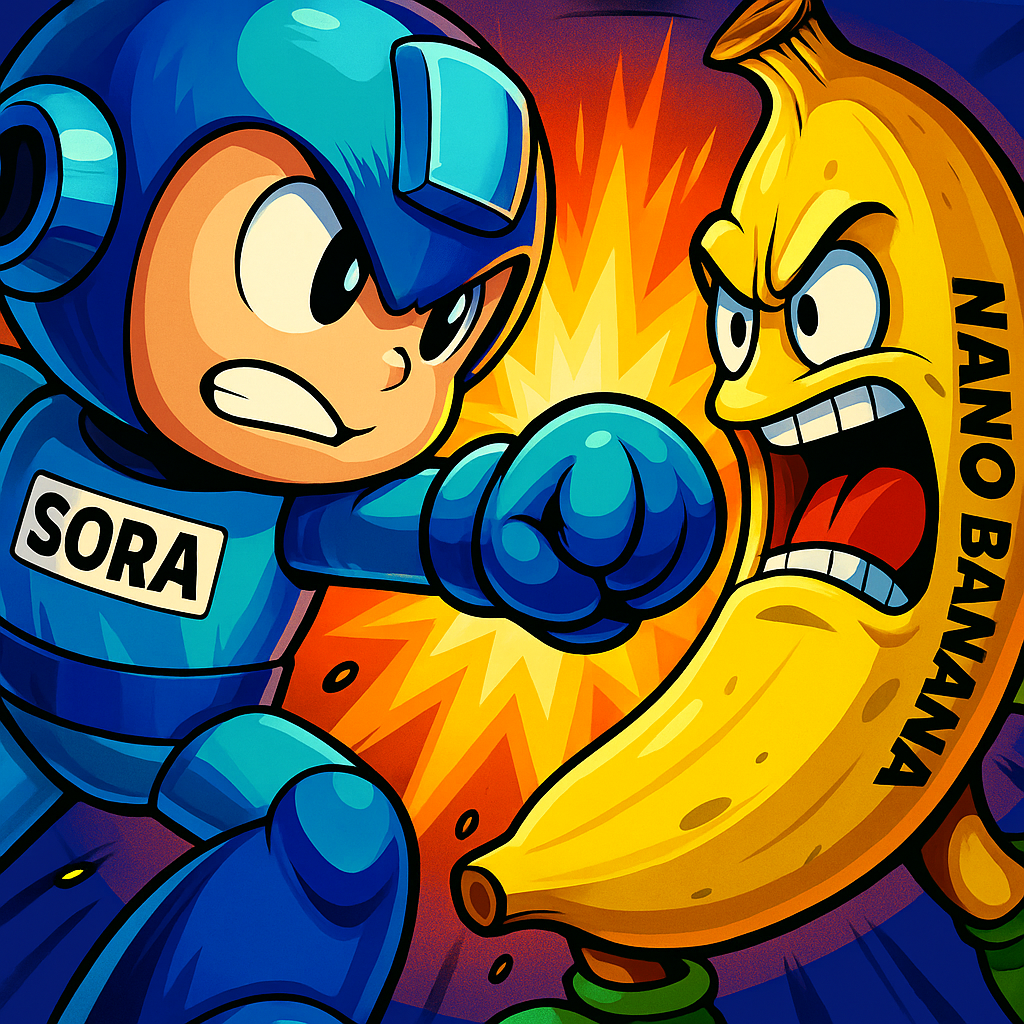
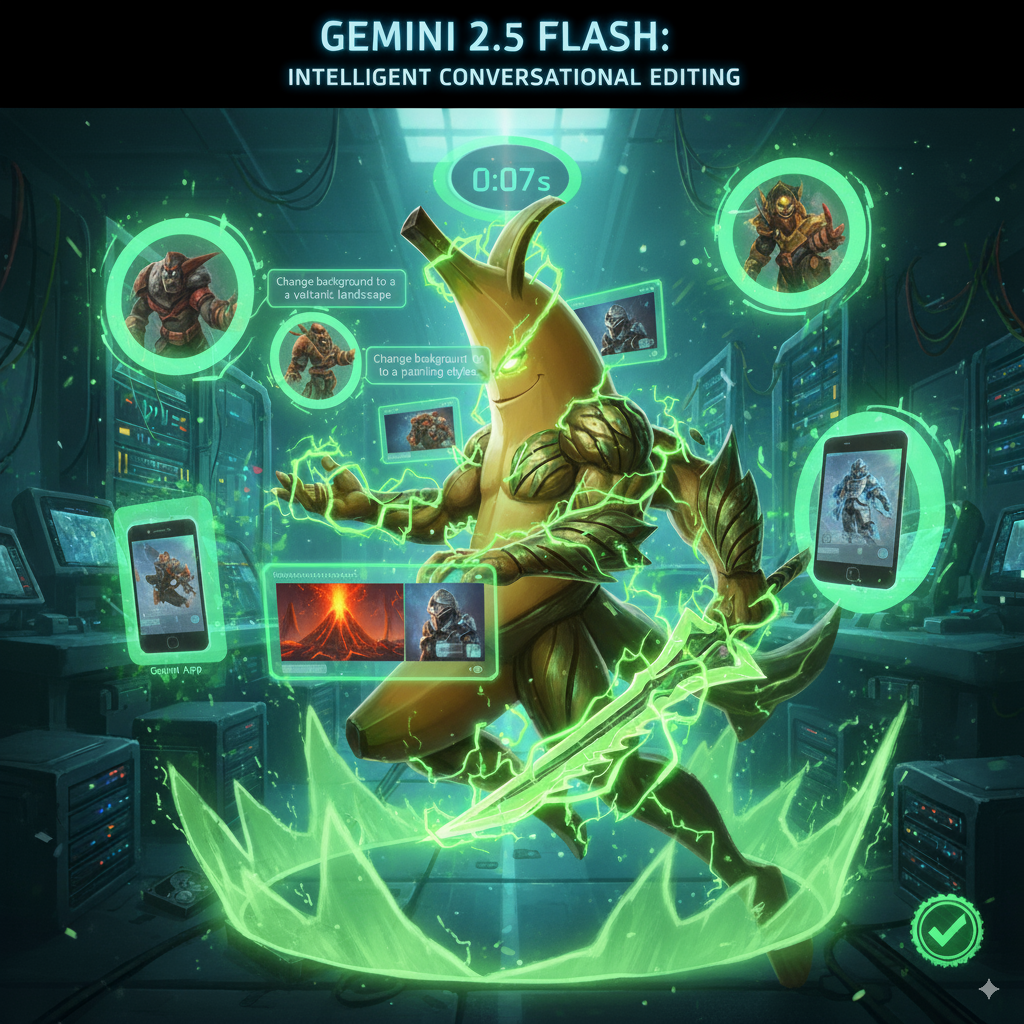
We continue giving it nonsensical instructions in plain text, using the texts from this blog that describe its strengths and weaknesses to generate remixes or evolutions in its self-generated images.
Use Cases
SORA
Ideal if you are looking for an artistic style or a high-quality frame for visual storytelling, scene prototyping, or conceptual material.
NANO BANANA
Better suited for visual marketing, branding, social media, and graphic design, where speed, consistency, and intuitive editing are key.
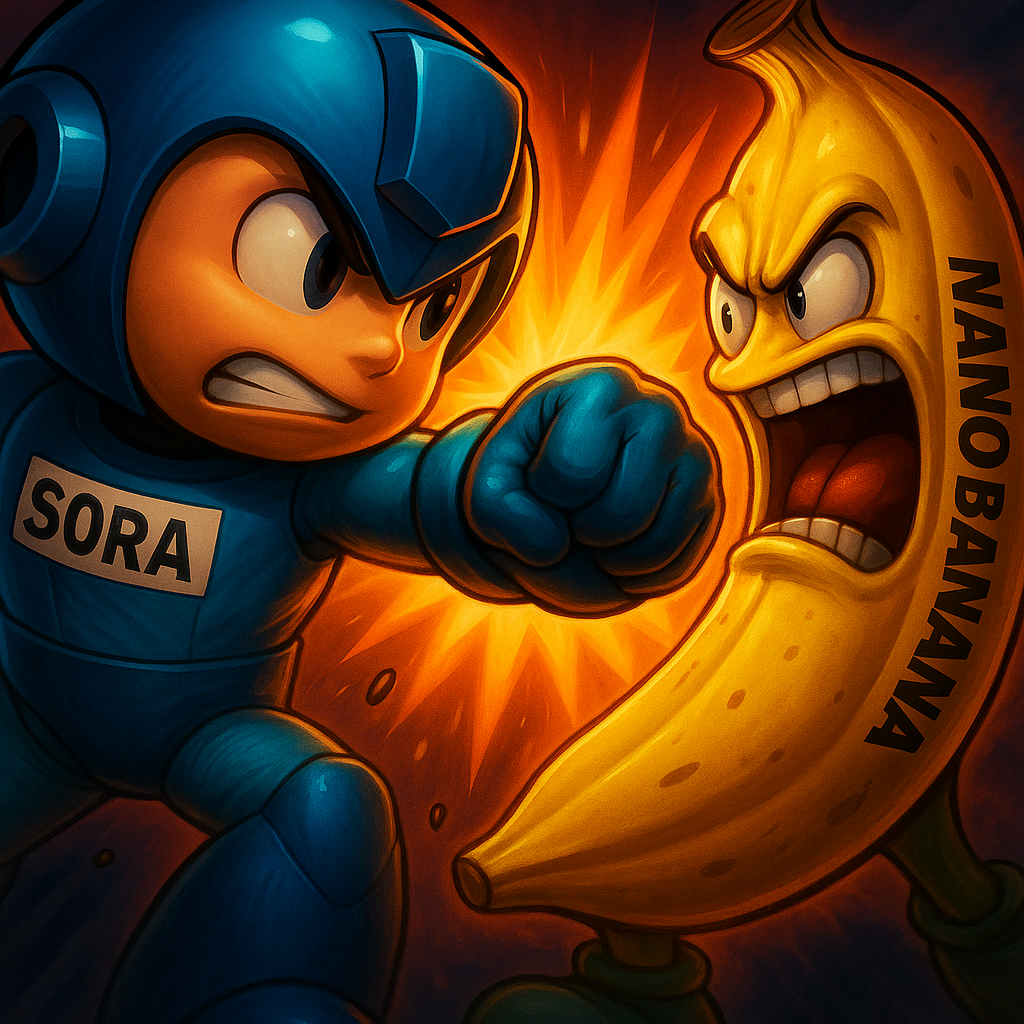
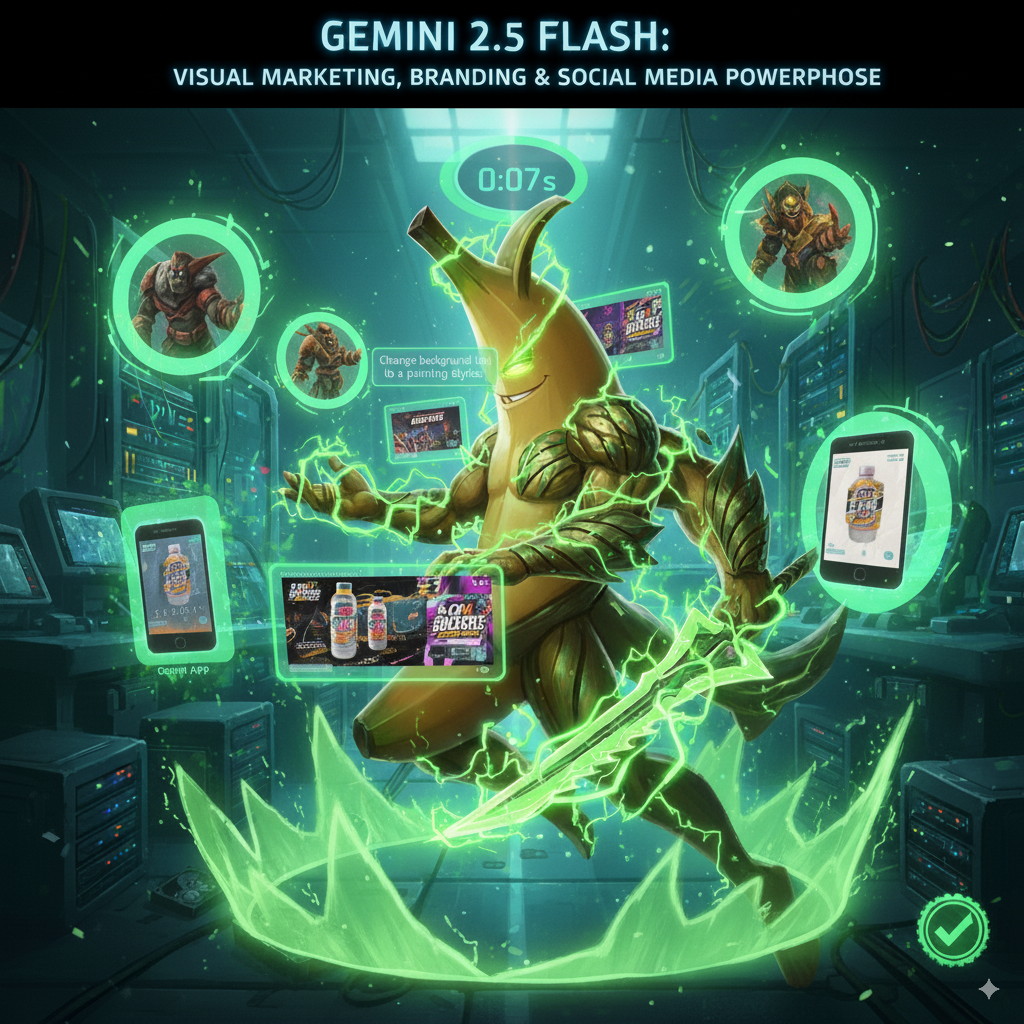
By adding the instruction “ideal if you are looking for an artistic style…” we can see how Sora evolves the previous image, adding a lot of detail and quality. On the other hand, Nano Banana, using “better suited for marketing…,” only modifies some elements of the image to reflect what is written in plain text.
Summary
SORA
It produces high-quality images but as a byproduct of its video engine, with less focus on editing and static consistency.
NANO BANANA
Today it is a more complete and practical tool for image creation and editing, offering speed, consistency, and conversational control.
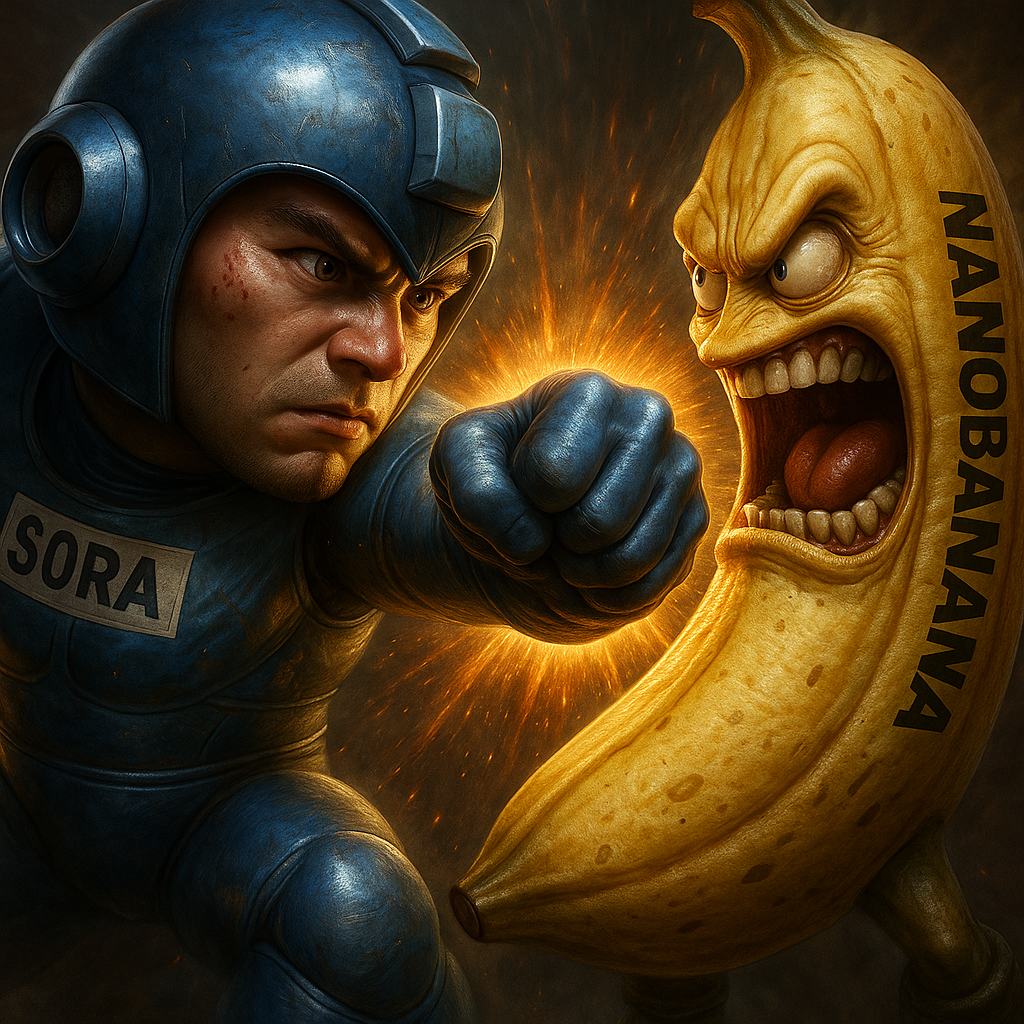
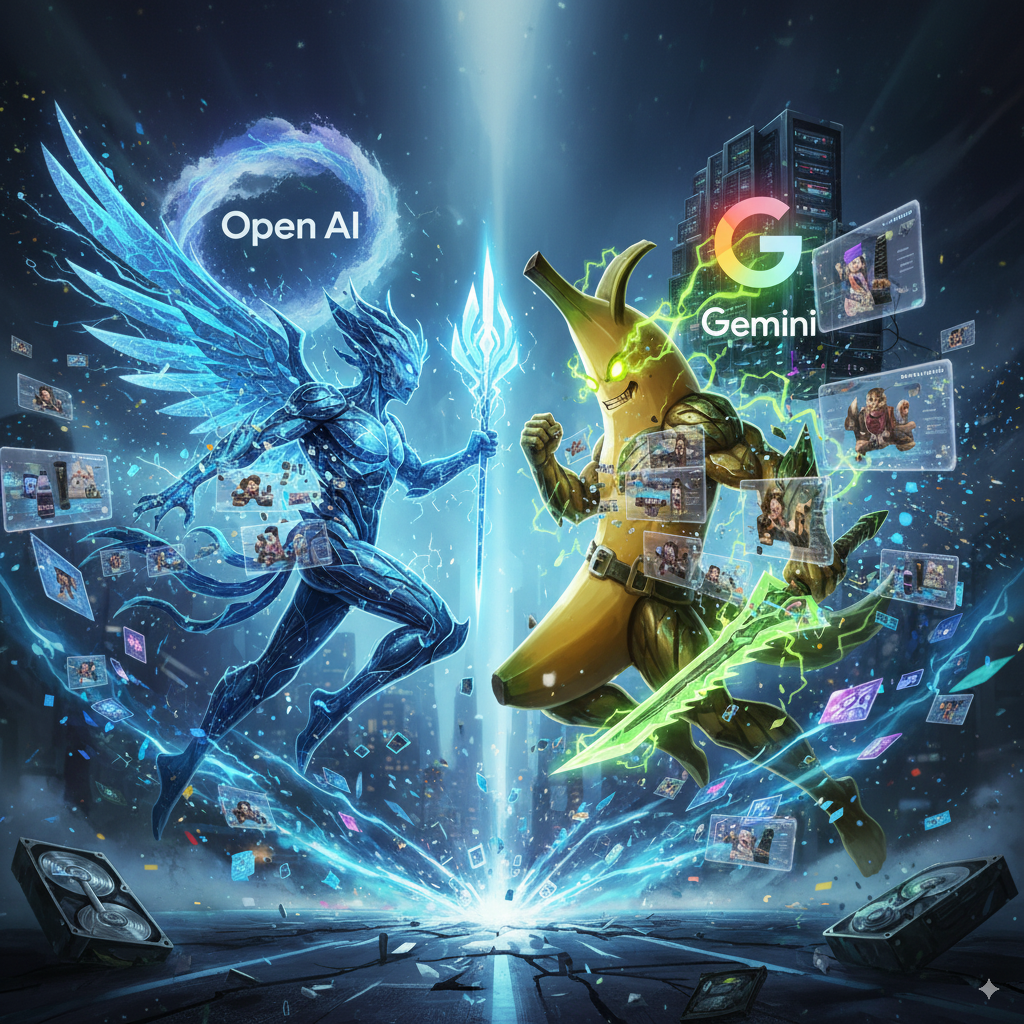
We give the final instruction to both AIs: “Create the ultimate image of a hypothetical battle between Sora and Nano Banana, using your full capability, realistic and highly detailed.” We see that Sora opts for maximum detail, shifting from cartoon to realistic, with recognizable textures and more lifelike materials. Google Gemini (Nano Banana) returns to the original, removes some details and text, and summarizes it in this way, with less detail and realism.
We continue investigating...
The advancement of models like Sora and Nano Banana demonstrates the speed at which artificial intelligence is transforming visual content creation. Each tool opens new possibilities, whether in generating photorealistic images, quickly and consistently editing graphic elements, or integrating more complex narratives through video. For businesses, this represents a range of opportunities, but also the challenge of determining which technology is best suited for each objective.

At Xarxalia, we understand that the key is not simply adopting the latest innovation, but evaluating how these solutions fit into real business processes, providing tangible and sustainable value. That is why our team continues to constantly research the behavior of these and other artificial intelligence tools, analyzing their advantages, limitations, and practical application potential.
This approach allows us to anticipate trends and provide our clients with high-quality digital resources, perfectly integrated into their communication, marketing, and technological development strategies. Additionally, we ensure that every delivery is made within the agreed timelines, keeping efficiency as the central pillar of our value proposition.
In short, at Xarxalia we continue working so that the companies that trust us not only have access to advanced tools, but also receive strategic support that ensures consistent, relevant, and timely results.